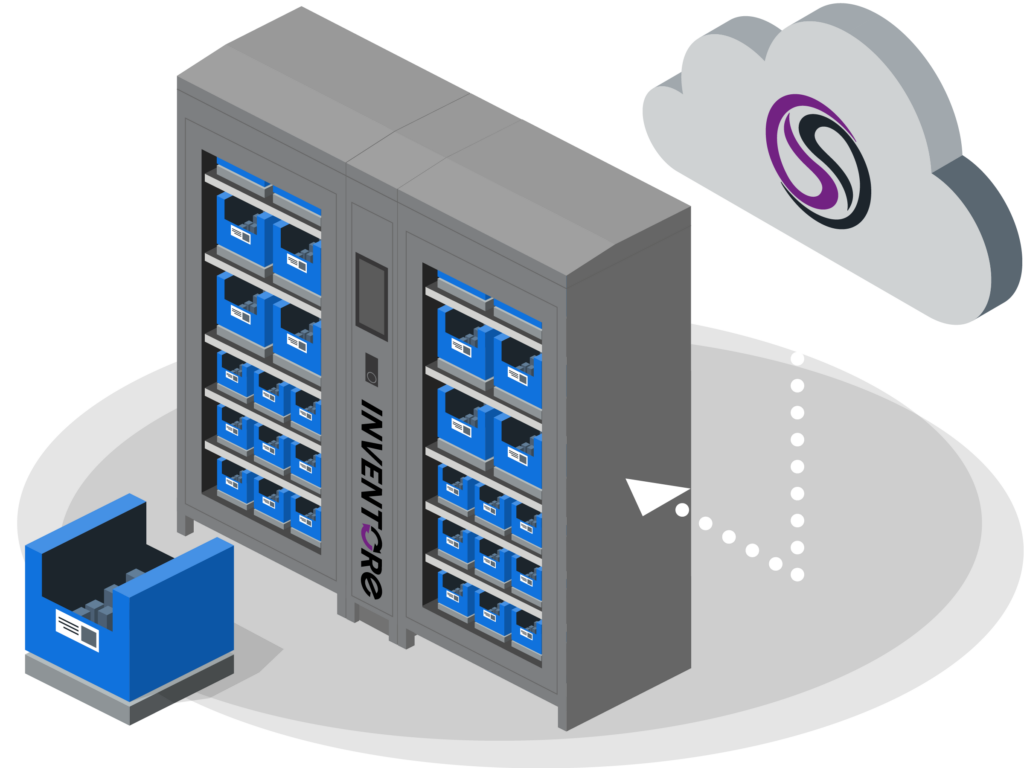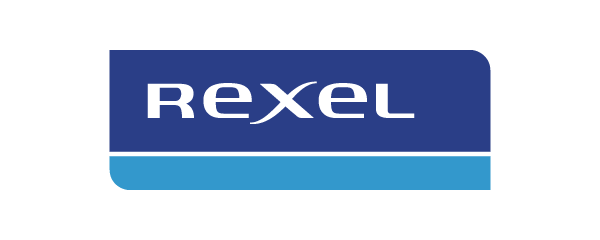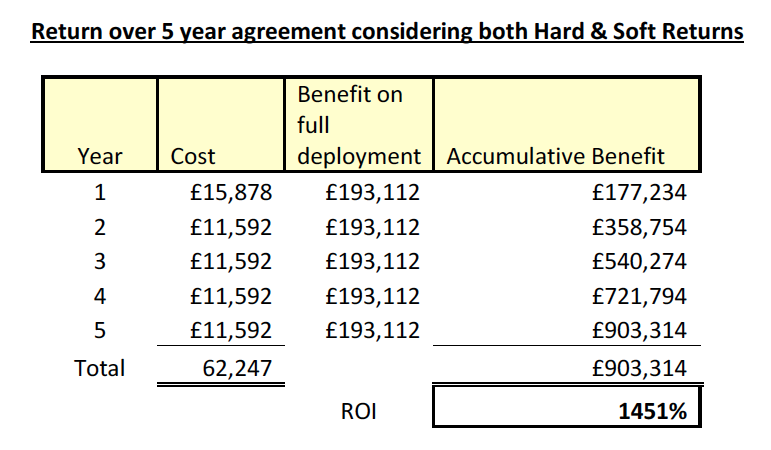Navigating the Social Housing Landscape
The social housing sector in the UK is navigating a complex and evolving landscape. While housing shortages and financial constraints persist, housing providers are increasingly embracing innovation, technology, and collaborative approaches to address these challenges. By prioritising tenant empowerment, digital transformation, sustainability, and community engagement. The sector strives to create affordable, inclusive, and sustainable housing solutions for the benefit of individuals and communities across the UK.
Digital transformation has the potential to revolutionise the social housing sector, driving operational efficiency, improving tenant experiences, and fostering sustainable communities.
This white paper explores the challenges faced by the social housing sector and the transformative power of housing technologies. It outlines key areas where digital transformation can make a significant impact, looks at some of the aspects that are still proving difficult to embed, and provides practical recommendations for housing providers to embark on their digital transformation journey.

The Role and Impact of Automating Social Housing Processes
Digital transformation within the social housing sector refers to the integration of digital technologies and innovative strategies to revolutionise operations, service delivery, and tenant experiences. It encompasses the adoption of digital tools, platforms, and data-driven approaches to optimise processes, enhance communication, improve efficiency, and drive positive social impact in the provision of affordable housing.
The scope of digital transformation within social housing is broad and encompasses various aspects of housing operations and services. Below are some key areas where digital transformation can make a significant impact:
- Tenant Engagement and Service Delivery: Digital transformation enables housing providers to engage and empower tenants through digital platforms and self-service functionalities. This includes online portals or mobile applications that allow tenants to access information, submit maintenance requests, pay rent digitally, and communicate with housing providers. It enhances convenience, transparency, and tenant satisfaction by enabling them to interact with housing services at their convenience and access information in real-time.
- Data-driven Decision Making: Digital transformation facilitates data collection, analysis, and utilisation for informed decision-making in social housing. By leveraging data analytics tools, housing providers can gain insights into tenant demographics, preferences, and service needs. This data-driven approach helps identify trends, optimise resource allocation, personalise service delivery, and plan for future housing requirements.
- Communication and Collaboration: Digital transformation enhances communication and collaboration between housing providers, tenants, supply chains and stakeholders. It includes the use of digital channels such as mobile apps, RFID technology, social media, and online communities to foster engagement, share information, and gather feedback. Digital communication platforms streamline communication during emergencies, provide updates on housing initiatives, and create opportunities for tenant participation in decision-making processes.
- Sustainability and Energy Efficiency: Digital technologies play a vital role in promoting sustainability and energy efficiency in social housing. Smart home solutions, energy monitoring systems, and connected devices allow tenants to monitor and optimise energy consumption, reducing utility costs and environmental impact. Renewable energy integration, smart grids, and energy management platforms enable housing providers to implement sustainable practices, reduce carbon footprints, and address energy poverty concerns. Data collection using methods such as product RFID tagging allows life cycle cost and longevity decisions to be assessed and considered based on real-world accurate data.
- Administrative Processes and Efficiency: Digital transformation streamlines administrative processes and improves operational efficiency in social housing. Integrated property management systems automate tasks such as lease management, rent collection, financial reporting, and compliance tracking; while accurate stock control, availability and data drive efficiency and productivity, particularly where field-based repairs teams are concerned. Automation reduces manual paperwork, minimises errors, and enables efficient resource and inventory allocation, enhancing productivity and freeing up staff time for more value-added activities.
- Compliance and Reporting: Digital transformation simplifies compliance management and reporting for housing providers. Digital systems enable accurate tracking of regulatory requirements, ensuring timely adherence to standards and reducing compliance risks. Automated reporting tools generate comprehensive reports, improving transparency, accountability, and compliance with regulatory bodies, while asset tracking tools such as RFID tagging allow accurate data collection and reporting at a micro level and detailed trend analysis.
- Asset Management and Maintenance: Digital technologies such as Internet of Things (IoT) devices, RFID tags, apps, sensors, and real-time monitoring systems improve asset management and maintenance in social housing. RFID tagging and IoT-enabled sensors can track the condition of properties, products, infrastructure, and equipment, providing real-time data on maintenance needs, energy consumption, and potential issues. Moreover, housing association technology enables better data management and analytics. By collecting and analyzing data on tenant needs and property conditions, more informed decisions can be made to proactively address potential problems. This enables landlords to meet the new standards of first time fix, as well as providing quality and easy-to-collect data on many aspects of product performance, such as life cycles, warranty periods, inspection and testing requirements etc.
Digital transformation within social housing encompasses a wide range of digital technologies, strategies, and approaches that enhance tenant experiences, improve operational efficiency, promote sustainability, and drive positive social impact. It empowers tenants, optimises resource allocation, streamlines processes, and leverages data to make informed decisions, ultimately advancing the goals of providing affordable, quality housing and building thriving communities.
Overcoming Implementation Challenges
In today’s rapidly evolving digital landscape, housing associations are embracing technological advancements to revolutionize their operations. The digital transformation in housing associations is not just a trend but a necessity, driven by the need to improve efficiency, enhance tenant experiences, and ensure sustainable management of housing resources. While digital transformation offers significant benefits to the social housing sector, implementing digital initiatives can present challenges. Overcoming these challenges requires careful planning, collaboration, and proactive strategies. Below are some of the key implementation challenges and recommendations for addressing them:
Limited Resources and Funding:
Challenge: Limited financial resources can hinder the implementation of digital transformation initiatives in social housing.
Recommendations:
- Seek external funding opportunities. Explore grants, subsidies, or partnerships with government agencies, private organisations within your supply chain for example, or foundations that support digital transformation in social housing.
- Develop a business case. Clearly articulate the potential benefits, return on investment, and long-term cost savings of digital initiatives to secure internal funding or attract external support.
Organisational Culture and Change Management:
Challenge: Resistance to change and a lack of digital culture within the organisation can impede the successful implementation of digital transformation.
Recommendations:
- Create a digital-first culture. Foster a culture of innovation and continuous learning by promoting the benefits of digital transformation, providing training and resources, and encouraging staff engagement and participation.
- Communicate the vision. Clearly communicate the rationale, goals, and benefits of digital transformation initiatives to all stakeholders, emphasising how it aligns with the organisation’s mission and enhances service delivery.
Data Privacy and Security:
Challenge: Data privacy and security concerns can hinder the adoption of digital technologies and platforms in social housing.
Recommendations:
- Ensure robust data protection policies are in place. Develop and implement comprehensive data protection policies and procedures to ensure compliance with relevant regulations and protect tenant and staff data.
- Implement robust cybersecurity measures. Ensure you have secure infrastructure, encryption, and access controls to protect sensitive data and minimise the risk of data breaches.
Digital Skills and Capacity Building:
Challenge: Limited digital skills and knowledge among staff can hinder the successful implementation and adoption of digital transformation initiatives.
Recommendations:
- Provide training and support. Offer training programs, workshops, and resources to upskill staff members and equip them with the necessary digital competencies.
- Foster cross-functional collaboration. Encourage collaboration and knowledge-sharing between staff members with diverse skill sets to leverage their expertise in implementing digital initiatives.
Tenant Engagement and Adoption:
Challenge: Encouraging tenant adoption and engagement with digital platforms and services can be a challenge, particularly among individuals with limited digital literacy or access to technology.
Recommendations:
- Provide digital literacy support. Offer training programs or workshops to help tenants build digital skills and familiarise themselves with digital tools and platforms.
- Ensure accessibility and inclusivity. Design digital platforms and services with accessibility features and user-friendly interfaces to accommodate a diverse range of tenants, including those with disabilities or limited digital literacy.
Integration and Interoperability:
Challenge: Integrating existing systems and ensuring interoperability between different digital solutions can be complex.
Recommendations:
- Conduct a thorough system analysis. Assess existing systems, identify integration requirements, and determine the compatibility and interoperability of digital solutions.
- Collaborate with technology partners. Engage with technology vendors and consultants who specialise in social housing to leverage their expertise in system integration and ensure seamless interoperability.
By addressing these implementation challenges through proactive strategies and a well-defined roadmap, housing providers can successfully navigate the digital transformation journey in the social housing sector. Embracing digital technologies, building internal capacity, and engaging stakeholders will ultimately lead to improved service delivery, enhanced tenant experiences, and long-term benefits for the social housing community.

New Developments for Old Challenges
While significant progress has been made in recent years on digital transformation within the social housing sector, the need to adopt new strategies and embrace new technologies remains ongoing, and a number of long-standing areas requiring change remain elusive. To take a look at 2 of these:
Inventory Management and Delivering Effective Van Stocks
Van stock refers to the inventory of essential supplies, tools, and equipment carried in service vans by field technicians to perform maintenance and repair tasks in social housing properties. Van stock plays a crucial role in ensuring prompt and efficient repairs, minimising downtime, and improving tenant satisfaction. A well-managed and maintained van stock reduces the need for pre-inspections, and unscheduled trips to stockists & suppliers, reduced CO2 emissions from unnecessary journeys and reduced disruption to tenants from multiple or delayed repair appointments. Key benefits:
- Prompt Repairs: Having van stock readily available allows field service technicians to quickly address maintenance and repair issues in social housing properties. They can access the necessary tools, supplies, and equipment without delay, reducing response times and minimising tenant inconvenience.
- Minimised Downtime: With well-stocked vans, technicians can complete repairs on the first visit, minimising the need for multiple trips or return visits. This reduces downtime for tenants and improves their overall satisfaction with the repair process.
- Increased Efficiency: Van stock enables technicians to carry a range of commonly used items, reducing the need for them to make frequent trips back to the warehouse or supplier which means there are more jobs completed per day. This saves time, reduces travel & salary downtime costs, reduces CO2 emissions, and enables technicians to handle a higher volume of repairs within a given time frame.
- Materials Cost Savings: Having van stock on hand can result in cost savings for housing providers. By carrying commonly used supplies and parts, they can take advantage of bulk purchasing, negotiate better deals with suppliers, and minimise emergency or rush orders, which often come with higher costs.
- Improved First-Time Fix Rate: Van stock ensures that technicians have the necessary materials to complete repairs on the first visit. This leads to a higher first-time fix rate, reducing the need for subsequent follow-up visits and improving overall operational efficiency.
- Flexibility and Adaptability: Van stock allows technicians to respond to a wide range of repair needs in social housing properties. They can handle common maintenance issues and unforeseen repairs or variations promptly, improving the overall quality and responsiveness of the maintenance service.
- Enhanced Customer Service: When technicians arrive with a well-equipped van and promptly resolve repair issues, it enhances the perception of quality service and responsiveness among tenants. Satisfied tenants are more likely to report positive experiences and recommend the housing provider to others.
- Streamlined Inventory Management: Maintaining van stock requires regular monitoring and restocking, which promotes better inventory management practices. Housing providers can track stock levels, monitor usage patterns, and identify trends to optimise inventory levels, reduce waste, and avoid stockouts.
- Other Benefits: Reduction in CO2 emissions associated with the additional miles driving to stockists or stores to collect materials. Better data collection and job costing. Ensure all items including consumables are accounted for. Better business planning. Greater ability to respond to emergencies & variations.
An appropriate digital management system will also make it easier for central planners to assign jobs to the correct Operative based on the stock as well as trade and allow Operatives to search for stock in other vehicles already in the field or their central store. Importantly, it will also allow housing providers to have real-time visibility of the stock value in the field ensuring remote audits and clear risk/exposure data is captured. It will also allow the housing provider to ensure that vehicles are not carrying excessive stock and are potentially overweight.
By leveraging the benefits of van stock in social housing repairs, housing providers can streamline their maintenance operations, improve tenant satisfaction, and achieve cost savings. It enables technicians to efficiently handle repairs on the spot, minimising disruptions and ensuring the timely resolution of maintenance issues.
Asset Management Data, Life Cycle, Servicing and Warranty Management
In social housing, the term asset management is used in relation to the housing stock itself. However, an asset can be anything from the whole home itself, through to the individual parts and components within it; and the tools & equipment used in its construction and maintenance. The management of an asset will differ according to its asset type, as will the data being recorded against it.
Historically, social housing providers have invested heavily in managing data at the top-line asset level, i.e., the home itself, but have not always had the digital tools needed to capture data at lower-level asset classes. Where a more detailed asset management requirement has been implemented at these lower levels, it often required various stages of significant manual input and processes.
The use of mobile apps to achieve this has now become increasingly popular and beneficial for organisations across various industries but has yet to see significant uptake in social housing. Mobile apps offer convenience, real-time access to information, and enhanced functionality for tracking and managing assets. Some key advantages:
Improved Asset Tracking: Mobile apps enable organisations to track assets (of any type), accurately and in real-time. Quality mobile asset management apps provide built-in GPS capabilities, barcode scanning, and RFID integration which allows users to easily locate and identify assets as well as capture detailed data about the asset. This data can include data such as:
- Asset names and identifications
- Manufacturer
- Installer
- Supplier
- Date of installation and purchase
- Warranty dates
- Inspection and servicing dates
- Photos and notes (damage etc)
- Location
- Condition
- Age
Added functionality such as GPS capability reduces the risk of loss or misplacement, while RFID tag scanning allows mobile apps to identify the particular asset quickly and simply in question, and to display all the data above, plus a number of other configurable data sets specific to the asset class in question. Plus, organisations can ensure they are taking advantage of warranty periods rather than replacing items unnecessarily that are still covered.
- Enhanced Data Accuracy: Mobile apps facilitate accurate and up-to-date asset data capture. Users can directly input asset information, record maintenance activities, update status, and capture relevant data through the app. This eliminates manual data entry errors and ensures that asset information is always accurate and readily available.
- Efficient Maintenance and Repairs: Mobile apps streamline maintenance and repair processes by providing technicians with easy access to asset information, work orders, and repair history. Technicians can update maintenance records, record repair activities, and submit service requests directly through the app, improving efficiency and reducing paperwork.
- Remote Asset Monitoring: Mobile apps enable remote monitoring of assets, especially for IoT-enabled devices. Users can receive real-time data and alerts on asset performance, health, or maintenance requirements. This proactive monitoring helps identify potential issues and schedule preventive maintenance, minimising downtime and maximising asset performance.
- Workflow Automation: Mobile apps can automate asset management workflows and tasks. For example, users can schedule maintenance reminders, automate work order generation, and streamline approval processes through the app. This reduces manual intervention, improves efficiency, and ensures timely actions for asset management activities.
- Data Analytics and Reporting: Mobile apps can integrate with analytics and reporting tools, providing valuable insights into asset performance, utilisation, and costs. Organisations can analyse data trends, identify optimisation opportunities, and make data-driven decisions for asset management strategies.
- Enhanced Collaboration and Communication: Mobile apps facilitate seamless collaboration and communication among team members involved in asset management. Users can share information, update statuses, and communicate through chat or messaging features within the app. This promotes better coordination and timely response to asset-related issues.
- Integration with Other Systems: Mobile apps can integrate with other enterprise systems, such as asset management software, ERP systems, or procurement systems. This allows for seamless data exchange and synchronisation, ensuring consistency and data integrity across various platforms.
By leveraging mobile apps for asset management, organisations can optimise asset utilisation, streamline maintenance processes, improve data accuracy, and enhance overall operational efficiency. It empowers users with real-time information, enables proactive decision-making, and contributes to cost savings and improved asset performance.
Digital Transformation is not an Option, it’s a Necessity
In summary, as we navigate evolving challenges faced in the social housing sector, it is clear that digital transformation is not just an option, but a necessity. It is imperative to drive operational efficiency, improve tenant experiences, leverage data for decision-making, optimise asset management, support social objectives, and address future emerging challenges.
he digital transformation in housing associations has proven to be a pivotal development in the social housing sector. By embracing digital transformation, the social housing sector can navigate its challenges and unlock new opportunities for efficiency, empowerment, and enhanced service delivery. With careful planning, collaboration, and a commitment to innovation, housing providers can embark on their digital transformation journey and create lasting positive impacts on their organisations and the communities they serve. The future of social housing is undeniably digital, and those who adapt will be well-positioned to thrive in this new era.
Author: Damion Rothner – Inventor-e Ltd


